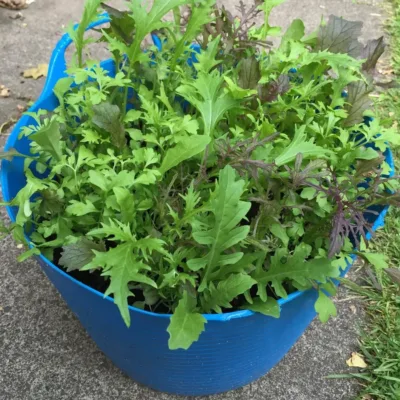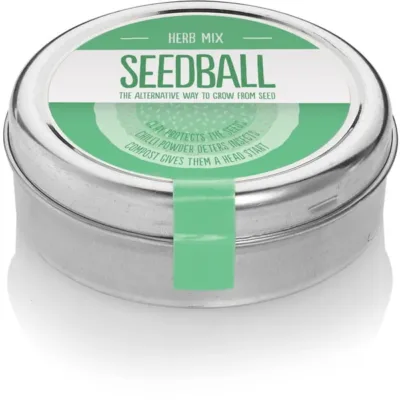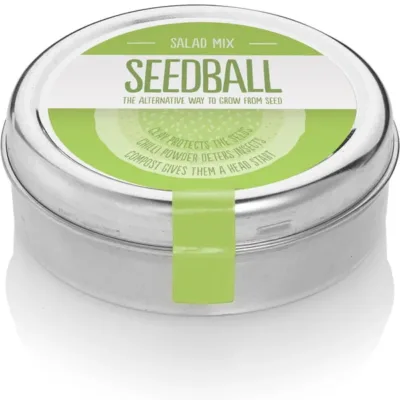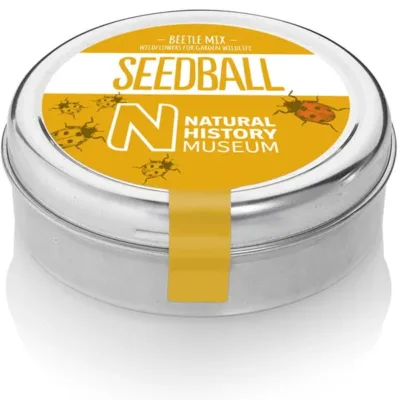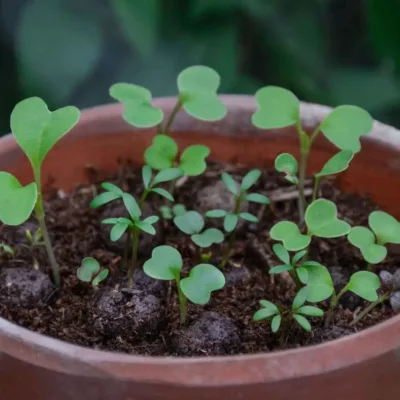Introduction to Autumn Sowing
Sowing wildflower seeds in the autumn season presents a unique and advantageous opportunity for UK gardeners. Autumn sowing aligns closely with the natural rhythms of wildflower growth cycles, thereby ensuring a robust and vibrant spring bloom. In nature, wildflowers typically release their seeds in late summer and autumn, allowing these seeds to lie dormant over the winter months. This period of dormancy is crucial, as it facilitates the natural stratification process that many wildflower species require to germinate effectively.
By sowing wildflower seeds in autumn, gardeners are essentially mimicking these natural processes. The cooling temperatures and increased moisture levels characteristic of the UK autumn create ideal conditions for seed germination. As the seeds gradually absorb moisture and respond to the fluctuations in temperature, they break dormancy at the optimal time when spring arrives. This leads to an early start on growth, enabling the young plants to establish strong root systems before the potentially harsh conditions of summer.
Moreover, autumn-sown wildflower seeds are less likely to face competition from invasive weed species. The late-season timing means that many annual weeds will have completed their lifecycle, reducing the immediate competition for resources. This advantage allows wildflower seedlings to grow without the stress of competing for light, water, and nutrients with aggressive weed species.
In summary, autumn sowing is not only beneficial for emulating the natural growth habits of wildflowers but also enhances the chances of achieving a flourishing and resilient spring bloom. By understanding and leveraging these natural processes, UK gardeners can create more sustainable and visually stunning wildflower displays. This approach aligns with ecological gardening principles, promoting biodiversity and supporting local wildlife by providing essential habitats and food sources.
Benefits of Autumn Sowing
Sowing wildflower seeds in the autumn presents a multitude of benefits that markedly enhance the growth and blossoming of your garden. One of the foremost advantages is that it allows for improved root development over the winter months. The cooler autumn temperatures are ideal for seed germination, enabling roots to establish themselves more robustly before the spring. This leads to healthier and more resilient plants come the growing season.
Another significant benefit is natural cold stratification. Many wildflower seeds require a period of cold to break dormancy, a process naturally achieved through autumn sowing. This exposure to cooler temperatures simulates the winter conditions needed to trigger germination, effectively increasing the success rate of your planting efforts.
Furthermore, autumn typically brings with it more consistent soil moisture, which is crucial for seedling survival. The seasonal rains ensure the soil remains sufficiently hydrated, providing the optimal conditions for seed germination and root establishment. Unlike the erratic weather patterns of spring, autumn offers a more stable environment, reducing the need for frequent manual watering.
Additionally, planting in the autumn often results in earlier blooming come spring. Since your wildflowers have had the advantage of early root development and have endured natural cold stratification, they are prepared to begin their growth cycle as soon as temperatures rise. This not only leads to an extended flowering season but also ensures that your garden bursts into color earlier than those planted in the spring.
By sowing wildflower seeds in autumn, UK gardeners can maximize their garden’s potential. The cumulative benefits of enhanced root systems, natural stratification, and improved soil moisture culminate in a vibrant, long-lasting display of wildflowers that adorns your garden well into the summer months.
Selecting the Right Wildflower Seeds
Choosing the appropriate wildflower seeds for autumn sowing in the UK requires an understanding of several critical factors, including climate suitability, soil conditions, and the desired bloom cycle. Native species play a pivotal role, not only for their environmental benefits but also for their resilience in the UK’s fluctuating weather patterns. When selecting your wildflower seeds, it’s essential to create a balanced mix of annuals, biennials, and perennials to ensure a continuous display of vibrant colors and attractive fragrances throughout the year.
One exemplary choice for native wildflowers is the Common Poppy (Papaver rhoeas), an annual known for its bright red petals. This species is incredibly hardy and requires minimal maintenance, making it ideal for beginners. Cornflower (Centaurea cyanus), another annual, provides a striking blue contrast and is highly attractive to pollinators. For biennials, the Evening Primrose (Oenothera biennis) offers delicate yellow blooms and is well-suited to the UK climate.
Perennials should not be overlooked as they form the backbone of any wildflower meadow, contributing longevity and stability to the planting scheme. The Oxeye Daisy (Leucanthemum vulgare), with its classic white and yellow flowers, thrives in diverse soil types and can tolerate both sunny and partially shaded locations. Field Scabious (Knautia arvensis) is another hardy perennial that provides long-lasting lavender-colored blooms, making it a favorite among UK gardeners.
Creating a well-rounded seed mix is essential for achieving a meadow that blooms across seasons. Aim for a variety that includes early bloomers like the Red Campion (Silene dioica), mid-season stars like Meadow Buttercup (Ranunculus acris), and late bloomers such as the Harebell (Campanula rotundifolia). This stratified approach not only adds visual diversity but also supports a wider range of pollinators and beneficial insects.
Finally, consider the specific conditions of your garden, such as soil pH and sunlight exposure, when making your selections. Consulting local horticultural societies or using native wildflower seed mixes tailored to UK gardens can offer additional guidance and ensure a successful planting. By thoughtfully selecting the right wildflower seeds, UK gardeners can create a thriving, self-sustaining ecosystem that enhances both biodiversity and aesthetic appeal.
Preparing the Soil for Sowing
Preparing the soil effectively is a pivotal step in ensuring the successful germination and growth of wildflower seeds. Start by selecting a site with good sunlight exposure, as most wildflowers thrive in well-lit conditions. The initial step in soil preparation involves clearing existing vegetation. Remove any weeds, grasses, or old plant debris to reduce competition for nutrients and sunlight. Hand-pulling or using a hoe can be effective methods for vegetation removal.
Once the area is cleared, till the soil to a depth of approximately 15 to 20 centimeters. Tilling helps to aerate the soil, improving its texture and structure, which is crucial for root development. During this process, it is also essential to remove any rocks or large clumps of soil that could hinder seed germination.
Assessing and addressing the health of the soil is another valuable step. Conduct a soil test to determine the pH and nutrient levels. Wildflowers generally prefer slightly acidic to neutral soil, with a pH ranging from 6.0 to 7.0. Based on the results of the soil test, you can amend the soil as needed. Incorporating organic matter such as compost or well-rotted manure can significantly enhance soil fertility, providing the necessary nutrients and improving soil structure.
Drainage is another critical factor to consider. Wildflower seeds require well-drained soil to prevent waterlogging, which can lead to root rot. If your soil is heavy clay or tends to retain water, consider adding sand or fine gravel to improve its drainage capabilities. For particularly challenging drainage issues, creating raised beds can be an effective solution.
Once these steps are completed, rake the soil to create a fine, even seedbed. This will ensure good seed-to-soil contact, which is essential for successful germination. By taking the time to prepare your soil thoroughly, you will create an optimal environment for your wildflower seeds to flourish, setting the stage for a vibrant and thriving wildflower garden.
Sowing Techniques and Best Practices
Sowing wildflower seeds in autumn can be a rewarding endeavor for UK gardeners. The key to successful germination and growth lies in following tried-and-tested sowing techniques and best practices. One of the crucial decisions you’ll need to make is between broadcasting and drilling your seeds.
Broadcasting involves scattering the seeds evenly across the soil surface by hand or with the aid of a spreader. This method is particularly useful for covering large areas quickly. To ensure even distribution, mix the seeds with a fine, dry sand at a ratio of about one part seeds to four parts sand. This not only helps spread the seeds more evenly but also makes it easier to see where you’ve sown them. For smaller plots, drilling can be more effective. This involves planting seeds in shallow rows, offering more control over seed placement but taking more time.
The time of day can also impact your success rate. Early morning or late afternoon is recommended, as cooler temperatures and reduced wind help keep seeds in place and minimize evapotranspiration. Achieving the correct sowing depth is another crucial factor. Most wildflower seeds are very small and need light to germinate. Therefore, they should be sown on the surface or no more than a quarter-inch deep. Lightly pressing the seeds into the soil using a roller or walking over the area helps ensure good soil-seed contact without burying them too deeply.
Avoid heavy watering immediately after sowing, as this can wash seeds away or bury them too deeply. Instead, a light misting is sufficient to settle the seeds. Following these guidelines will help you distribute your wildflower seeds evenly and plant them at the correct depth, increasing your chances of a vibrant and colorful display come spring.
Post-Sowing Care and Maintenance
After sowing wildflower seeds, the post-sowing care and maintenance during the autumn and winter months are pivotal for their successful germination and growth. Initially, light watering can help settle the seeds into the soil, ensuring good soil contact, but it’s crucial to avoid overwatering which can cause seeds to rot. In areas that generally experience sufficient rainfall, additional watering might not be required, but it’s wise to monitor the moisture level to ensure the soil does not completely dry out.
Mulching is another key aspect of post-sowing care. Applying a thin layer of organic mulch, such as straw or leaf mold, can help protect the seeds from harsh weather conditions. Mulch offers a dual benefit by retaining soil moisture and insulating the seedbed against frost and cold temperatures. However, be wary of using too thick a layer of mulch, as it can smother the seedlings.
Monitoring the sowing site regularly is crucial for early detection of pest and disease issues. Look out for common pests such as birds, mice, and slugs that may feed on seeds or young shoots. In case of pest incursions, consider organic and wildlife-friendly deterrents to protect the emerging wildflowers. Additionally, maintaining vigilance for signs of diseases such as damping-off, a fungal condition exacerbated by wet conditions, will allow timely interventions.
Weed management is a continuous task post-sowing. Weeds can outcompete wildflowers for nutrients, water, and light. Regularly checking for and carefully hand-pulling any emerging weeds can significantly reduce competition and promote healthier wildflower growth. Another strategy is to use pre-emergent weed control methods, ensuring that they are safe for wildflower seeds.
By adhering to these post-sowing care and maintenance guidelines, UK gardeners can enhance the likelihood of a successful wildflower meadow that thrives and blooms with vibrant diversity come spring and summer.
Anticipating Spring Growth
As the chill of winter gradually gives way to the warmer days of spring, gardeners can look forward to the first signs of life from the wildflower seeds sown in autumn. The early stages of spring herald the germination of these seeds, a crucial time that determines the vibrancy and health of wildflower meadows for the months to come. Initial germination typically begins when soil temperatures start to consistently rise above 5°C, often around late March to early April in the UK.
During this period, gardeners will notice tiny seedlings breaking through the soil surface. The sequencing of germination and growth can vary depending on the specific species sown. Early bloomers like Red Campion and Corn Poppy might be among the first to manifest, showing their initial leaves within a few weeks. As April transitions into May, other species such as Ox-eye Daisy and Wild Carrot commence their growth, creating a staggered and sustained display of colors.
Supporting these nascent plants is crucial for their robust development. One of the first steps is to thin out crowded seedlings to prevent competition for resources. Ideal spacing ensures that each plant has adequate room to access sunlight, water, and nutrients. For instance, thinning seedlings to one every 10-15 cm can significantly enhance overall growth and bloom density.
Watering practices also play a vital role. While wildflowers are generally resilient and adapted to UK climates, additional watering may be essential during unusually dry spells. It is advisable to water the seedlings early in the morning or late in the evening to minimize evaporation and ensure deep soil penetration, promoting strong root systems.
By attentively monitoring and tending to these early growth stages, gardeners can set the foundation for a flourishing wildflower meadow. The transformation continues over the months, culminating in a riot of colors and forms that beneficially support local ecosystems and create a visually stunning landscape.
Long-Term Wildflower Meadow Management
Successfully establishing a wildflower meadow is only the beginning; its long-term management is crucial to sustain its beauty and ecological benefits. Annual mowing is essential for maintaining balance and preventing the meadow from becoming overgrown. The ideal time for mowing is late summer or early autumn, once the majority of wildflower seeds have been dispersed. This practice helps control aggressive grass growth and encourages the proliferation of more delicate wildflower species.
In addition to mowing, reseeding may be necessary to enhance diversity or to fill in gaps where natural germination has not occurred. This can be done selectively, focusing on areas that appear sparse or where certain desired species have not established themselves. When reseeding, consider using native seed mixes that suit the local soil and climate conditions to ensure better integration and sustainability.
Managing invasive species is another critical aspect of long-term wildflower meadow maintenance. Regular monitoring and prompt removal of invasive plants can prevent them from outcompeting native flora. Employing techniques such as manual removal or targeted herbicide application can be effective, but always favor environmentally friendly practices to minimize ecological disruption.
Maintaining a wildflower meadow offers significant ecological advantages, including supporting local wildlife such as pollinators, birds, and small mammals. A well-managed meadow fosters a rich tapestry of biodiversity, creating a dynamic and resilient ecosystem. To further enhance your meadow, consider adding features such as pathways, which facilitate access without disturbing the plantings, and seating areas that allow for quiet enjoyment of the natural surroundings.
Thoughtful integration of additional plantings around the meadow’s edges or in particularly focal spots can provide visual interest and attract varied species. Be sure to select complementary plants that will not compromise the existing habitat but will instead enrich the overall meadow environment.
Buy UK Wild Flower Seeds
-
 Wildlife Kitchen Garden Mix & Gift Box by Seedball£21.99
Wildlife Kitchen Garden Mix & Gift Box by Seedball£21.99 -
 Herb Mix Seeds by Seedball£6.99
Herb Mix Seeds by Seedball£6.99 -
 Salad Mix Seeds by Seedball£6.99
Salad Mix Seeds by Seedball£6.99 -
 Beetle Mix Wildflower Seeds by Seedball£6.99
Beetle Mix Wildflower Seeds by Seedball£6.99 -
 Bumblebee Mix Wildflower Seed£3.49
Bumblebee Mix Wildflower Seed£3.49 -
 Flowering Lawn Mix Wildflower Seed£3.49
Flowering Lawn Mix Wildflower Seed£3.49 -
 Early Flowering Mix Wildflower Seed£3.49
Early Flowering Mix Wildflower Seed£3.49 -
 Easy Start Mix Wildflower Seed£3.49
Easy Start Mix Wildflower Seed£3.49 -
 Night Scented Mix Wildflower Seed£3.49
Night Scented Mix Wildflower Seed£3.49

